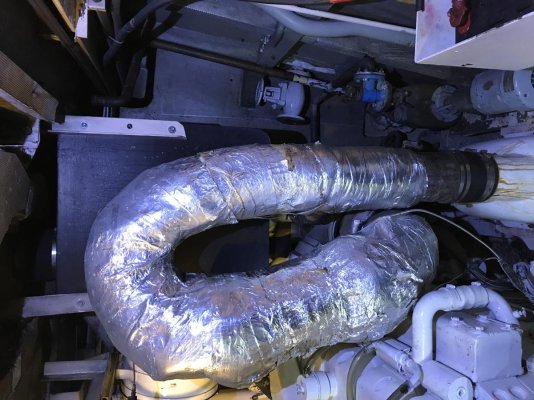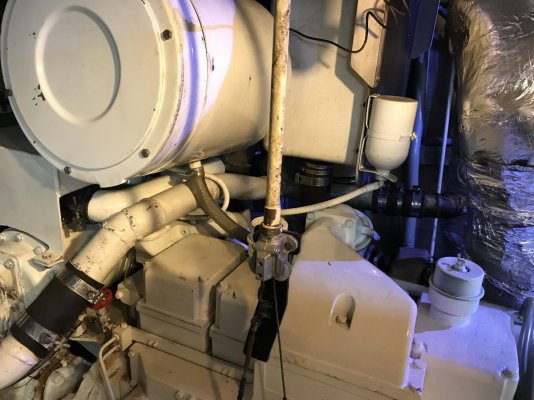sleaper
Veteran Member
- Joined
- Mar 22, 2018
- Messages
- 41
- Location
- New Zealand
- Vessel Name
- MV Takapu 2
- Vessel Make
- ex HMNZS Patrol Craft 94'
So I have a 2.5 inch valve and the water flow out of it is very low.
Upon removing the Pipework I can see the following, but I’m unsure if it’s anflow restrictor?
It’s on the through hull valve for the wet exhaust outlet of the exhaust system.
The design of our system have two outlets overboard. One pumps well, the other ( this one) seems to trickle, whereas the port side both outlets flow about the same.
https://imgur.com/2YSUT0l
A very small amount of water moves through the opening at the bottom of that valve.
Upon removing the Pipework I can see the following, but I’m unsure if it’s anflow restrictor?
It’s on the through hull valve for the wet exhaust outlet of the exhaust system.
The design of our system have two outlets overboard. One pumps well, the other ( this one) seems to trickle, whereas the port side both outlets flow about the same.
https://imgur.com/2YSUT0l
A very small amount of water moves through the opening at the bottom of that valve.
Last edited:





